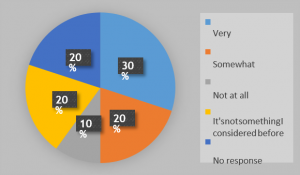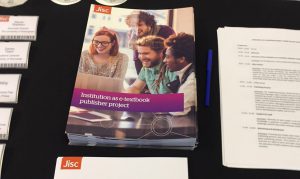This blog post was written by Graham Stone, Jisc Collections Senior Research Manager, and Mafalda Marques, Jisc Collections Research Analyst.
As a final output of the Institution as e-textbook publisher project, we have created a toolkit to provide practical help and support to universities wishing to start or that are already in their initial stages of e-textbook publication.
Who is the toolkit for?
It is aimed at all staff who have an interest in this fast-developing area, such as information professionals, university press staff, learning and teaching advisors, educational technologists, academic staff and senior university staff who may wish to consider publishing their own e-textbooks.
What are the advantages for institutions to create their own e-textbooks?
The UK spends a conservative estimated amount of £30-40 million on e-textbooks. However, little progress has been made in achieving acceptable savings from major publishers for UK higher education. Open e-textbooks published by the sector, for the sector present an opportunity to keep the money within the system and to build capacity and skills. It also levels the playing field for students, giving parity and no hidden costs.
Open textbooks can be blended with teaching practice, by allowing the outputs to be moulded to individual methods, while protecting copyright and IPR. Furthermore, recognition and reward at a national level promotes teaching excellence.
The toolkit will help institutions wanting to provide an alternative to expensive textbooks produced by commercial publishers by providing practical help and support to universities wishing to publish their own e-textbooks.
What guidance will you find in the textbook?
The toolkit is structured into eight sections, all content is provided with a CC BY licence so that you can share, re-use and re-purpose:
Why might an institution want to consider establishing an e-textbook publishing venture?
This section sets the scene for the critical stage of research and planning and explores the potential benefits and the challenges of embarking on textbook publishing. It also provides some practical guidance on different ways this can be achieved either by individual institutions or collaboratively.
What is the process a publication goes through from conception to publication? This section provides an outline of what is involved in the publishing process, including content acquisition, writing and production stages, and highlights the need to establish clear submission, review, and production procedures early on in the venture.
Authors need support during the process of creating e-textbooks. For example, training or time away from academic duties to write. The key to providing adequate support for staff is to ensure that your textbook initiative is well planned, that the resources, skills and time required for the job are well understood and provided for, and that there is wide buy-in for the idea at the institution.
Technologies play an important role in the e-textbook production cycle: authoring the content, developing the content into an e-textbook format, publishing and promotion.
This section presents ways of identifying your audience. It outlines potential distribution channels for both open access and print sales, and ways of bringing e-textbooks to the attention of both students and academics via a range of marketing and publicity activities.
This section offers guidance on the methodologies used to evaluate the performance of e-textbooks. It looks at why evaluation is important, what should be evaluated, methodologies and tools, and addresses the challenges of evaluation.
Publishing students work in the form of e-textbooks builds institutional reputation as student publishing is opened out. This section looks at the reasons and benefits for publishing students work and considers what work to select for publication, ethical issues, support needed, revision and contractual issues.
How can we further support your institution?
We would like to hear your thoughts on the toolkit. Was it useful to you? Is there any content that you think we have missed? Do you have any examples or best practice to offer?
Jisc Collections is in the process of refining a new e-textbook strategy, a core element of which will be to help institutions make the business case and implementation case for e-textbook publishing or moving towards open access.
If you are interested in getting in touch about the above, please contact us at graham.stone@jisc.ac.uk


